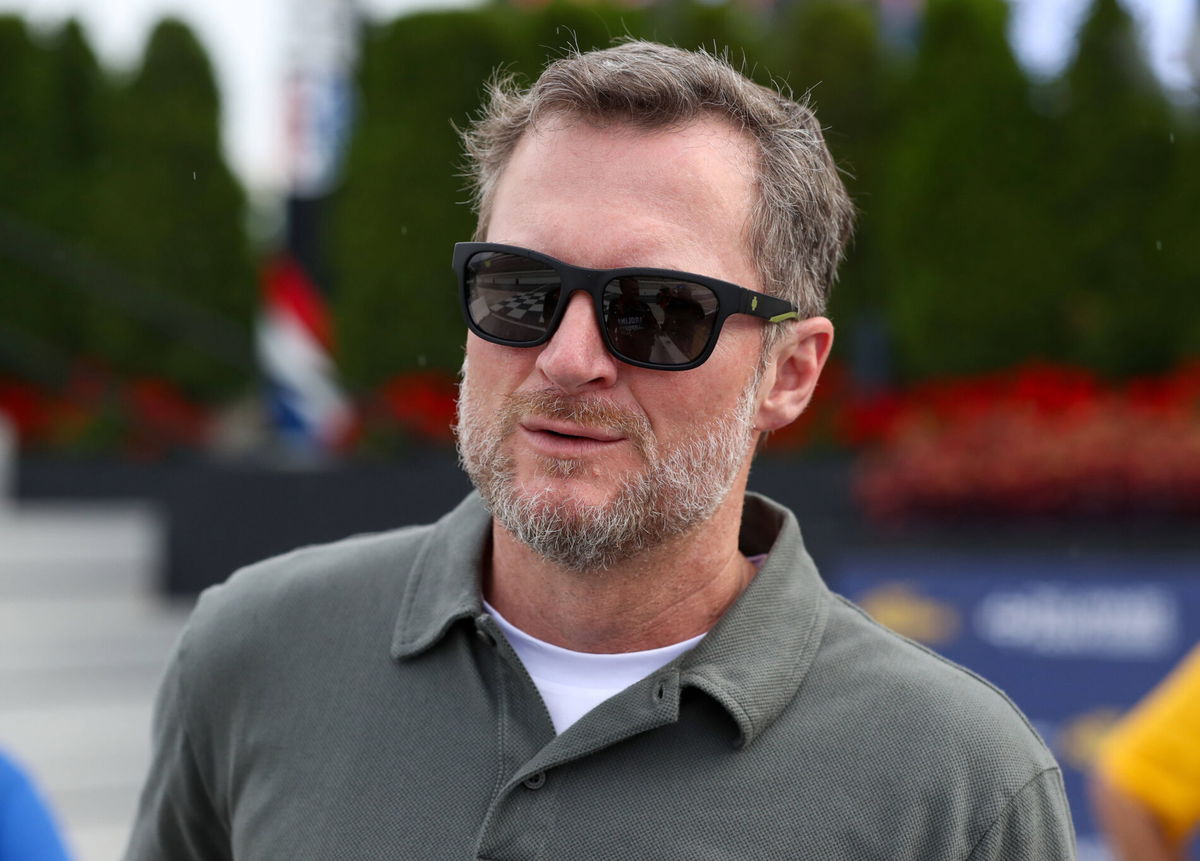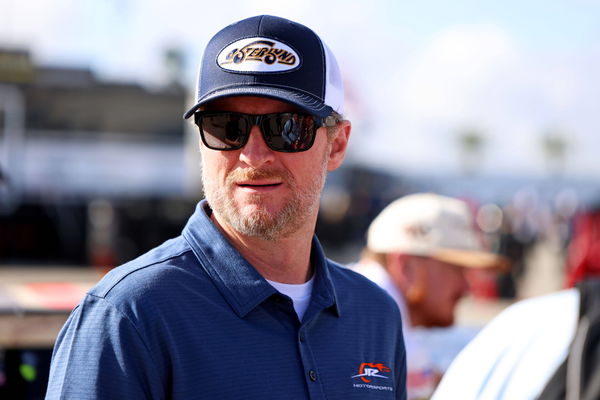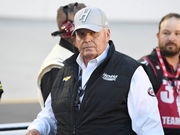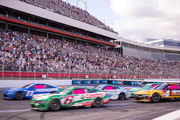
Imago
NASCAR, Motorsport, USA Xfinity: NASCAR Xfinity Series Race at Dover Jul 19, 2025 Dover, Delaware, USA NASCAR Xfinity Series owner Dale Earnhardt Jr. looks on from pit road during the BetRivers 200 at Dover Motor Speedway. Dover Dover Motor Speedway Delaware USA, EDITORIAL USE ONLY PUBLICATIONxINxGERxSUIxAUTxONLY Copyright: xMatthewxO Harenx 20250719_tcs_bm2_067

Imago
NASCAR, Motorsport, USA Xfinity: NASCAR Xfinity Series Race at Dover Jul 19, 2025 Dover, Delaware, USA NASCAR Xfinity Series owner Dale Earnhardt Jr. looks on from pit road during the BetRivers 200 at Dover Motor Speedway. Dover Dover Motor Speedway Delaware USA, EDITORIAL USE ONLY PUBLICATIONxINxGERxSUIxAUTxONLY Copyright: xMatthewxO Harenx 20250719_tcs_bm2_067
For decades, NASCAR’s traditional points world rewarded steady grins as much as glory. From Bob Latford’s 1975 overhaul, through the pre-2004 era, champions were often the most consistent cars on the lead lap with a long streak of top-10s, smart pit calls, and mileage mattered more than a single hot streak. That era produced stories like Matt Kenseth’s 2003 title, and a fanbase that celebrated season-long durability over dramatics. Charts tracing the seven generations of NASCAR scoring show how the math once made the full 36-race calendar the real contest. But the current picture reads like playoff television.
Watch What’s Trending Now!
Stage points, win-and-in berths, and four-round eliminations turned finales into a do-or-die theater, and not everyone’s thrilled. Drivers and pundits have openly griped that the knockout format can reward short hot streaks over season-long excellence. “These championships aren’t like winning like Petty and Earnhardt used to win them,” Kevin Harvick said after a season where wins didn’t guarantee a title run, and critics pointed to incidents and punishments born from the format’s pressure. With debate rising from paddocks to boardrooms, one of the most important voices in the industry, Dale Earnhardt Jr., has also spoken up about a similar nostalgia that the older generations feel.
ADVERTISEMENT
Dale Jr. rekindles the nostalgia fueling the push against stage points
Dale Jr.’s co-host in the Dirty Mo Media’s Dale Jr Download podcast, TJ Majors, brought up a piece of NASCAR lore long buried under modern stats. “Do you ever see the page that actually calculates the points like how they used to? Like, I always look at that,” he asked. Junior responded with unexpected warmth, saying, “I do, too. I think it’s kind of cool.” That little exchange opens the door to NASCAR’s deep history with the Latford points system, which ran from 1975 until 2003. Under this system, every lap, pit call, and finish mattered across a 36-race marathon. The drama of Alan Kulwicki’s 1992 “Underbird” championship, where he led just one more lap than Bill Elliott and won the title by 10 points at Atlanta, is one such memorable instance.
Junior highlighted the stakes if the old math were applied today, “Chase Briscoe’s within 30, 30 or 18 or something points after his win. I think Chase Elliott’s still leading the points if we’re going by the original.” That kind of margin feels familiar to long-time fans. In 1990, Dale Earnhardt Sr. beat Mark Martin by just 26 points, a season remembered for Martin’s costly 46-point penalty for using an unapproved carburetor spacer early in the year. This is exactly why Junior finds these alternate standings so entertaining, because it mirrors the relentless grind of older championships.
As Junior continued, he noted, “So, Kyle Larson’s 67 back. William Byron is 72 back. That’s a tight little battle.” That’s not far off from historical title races that kept fans glued to their radios and TVs. In 1979, Richard Petty edged Darrell Waltrip for the Cup by 11 points despite Waltrip winning more races. And in 2003, the last year before the playoffs, Matt Kenseth famously clinched the championship with just one win but unmatched week-to-week consistency, sparking the debate that led to the introduction of the playoff era. Junior’s fascination shows that today’s drivers could still be in similar tightrope battles if NASCAR hadn’t shifted formats.
ADVERTISEMENT

Imago
NASCAR, Motorsport, USA Cup Practice Feb 12, 2025 Daytona Beach, Florida, USA NASCAR team owner Dale Earnhardt Jr. looks on during practice for the Daytona 500 at Daytona International Speedway. Daytona Beach Daytona International Speedway Florida USA, EDITORIAL USE ONLY PUBLICATIONxINxGERxSUIxAUTxONLY Copyright: xPeterxCaseyx 20250212_pjc_bc1_039
He later admitted, “I have to be honest, I find that really entertaining. I don’t know if that says anything. Is it only entertaining because it’s nostalgic? Because it doesn’t exist? Like, if it was the way it was, I wouldn’t feel this way,” while another voice from the studio added, “Yeah, because you’re yearning for it.” The tug-of-war perfectly reflects NASCAR’s fanbase. When Brian France introduced the playoff system in 2004, it was designed to create “Game 7 moments” similar to those found in stick-and-ball sports. And while it has succeeded in producing last-race drama, like Joey Logano’s 2018 championship win at Homestead, the old guard argues it undercuts the slow-burning tension that crowned legends like Dale Earnhardt Sr., Jeff Gordon, and Richard Petty built.
ADVERTISEMENT
Junior pushed the thought experiment further: “If somebody came in tomorrow and said, we’re adopting this right now. Going forward, this is what we’re doing. Would we all kind of like it? Not like it? Not care? You would love it.” While Majors added to that sentiment, saying, “Yeah, we’d love it. It might be a little closer, too. Because we race differently for stages, and you flip stages more and stuff now for playoff points,” but the other voice seemed not to agree with the changes, arguing, “Fans like me would not like it. Not because I didn’t grow up with this sport… I want to tweak the playoffs, but I like the idea of playoffs.” A 2021 survey by The Athletic found older fans overwhelmingly preferring consistency-based championships, while younger and leaned toward the excitement of playoffs.
And that may be the unavoidable truth: nostalgia appeals deeply to lifers, but the modern model is what hooked a whole new generation.
Top Stories
Rick Hendrick Strikes Fear in NASCAR Fans With Chevy’s New “Illegal” Car

New Charter Deal Triggers ‘Financial Frenzy’ as NASCAR Teams Set for Massive Payday

Martin Truex Jr’s Former Crew Chief Ends 12-Year Fight In Huge Personal Announcement

Denny Hamlin Gloats as Jim France Forced to Eat His Words Against Rick Hendrick & Co.

Major Blow to Trackhouse Racing as Team Penske Steals Veteran Crew Chief Back in Unexpected Move

ADVERTISEMENT
Dale Jr. shares strong thoughts on NASCAR track’s notorious chicane
After Saturday’s NASCAR Xfinity Series race at Portland International Raceway, attention quickly shifted from Connor Zilisch’s win to the track’s infamous chicane. Zilisch led 70 of 78 laps, navigating a final restart that left multiple drivers confused. “That little kink chicane, being the very first turn you’re going to enter after a restart at any racetrack, is a bad idea. It’s just not a good design…We got four-wide on that final restart, and the majority of the cars missed the inner curb. The majority of the top five cut Turn 2,” said Junior, explaining why he welcomed NASCAR’s decision to remove the track for 2026.
The hard right-hander into Turn 2 drew sharp criticism from the NASCAR veteran. “I don’t have a problem with them hitting, but I don’t like the fact that none of them make Turn 2…This chicane is bulls–. You shouldn’t have this aggressive of a chicane at the end of the front straightaway, especially when you have a green-white checkered…It’s just no fun…Change the corner…just get rid of the f—g corner…It’s fine in IndyCar or F1 for them to run this type of corner. We don’t need corners like that,” he added, highlighting how the track’s layout clashes with NASCAR’s racing style, even if it suits other series like IndyCar and F1.
Beyond the chicane, Portland’s technical infrastructure also frustrated teams. BRK Racing owner Randy Knighton pointed out issues such as limited internet connectivity, forcing the crew to rely on generators and mobile hotspots for telemetry. The 2007 renovations, including wider turns and additional curbs, failed to meet NASCAR’s data-heavy demands.
ADVERTISEMENT
With the track leaving the 2026 schedule, veterans like Dale Jr. can breathe easier, while Darlington Raceway gains a second race date. PIR may still aim for a future return after upgrades, but for now, the series will move on.
ADVERTISEMENT
ADVERTISEMENT
ADVERTISEMENT

